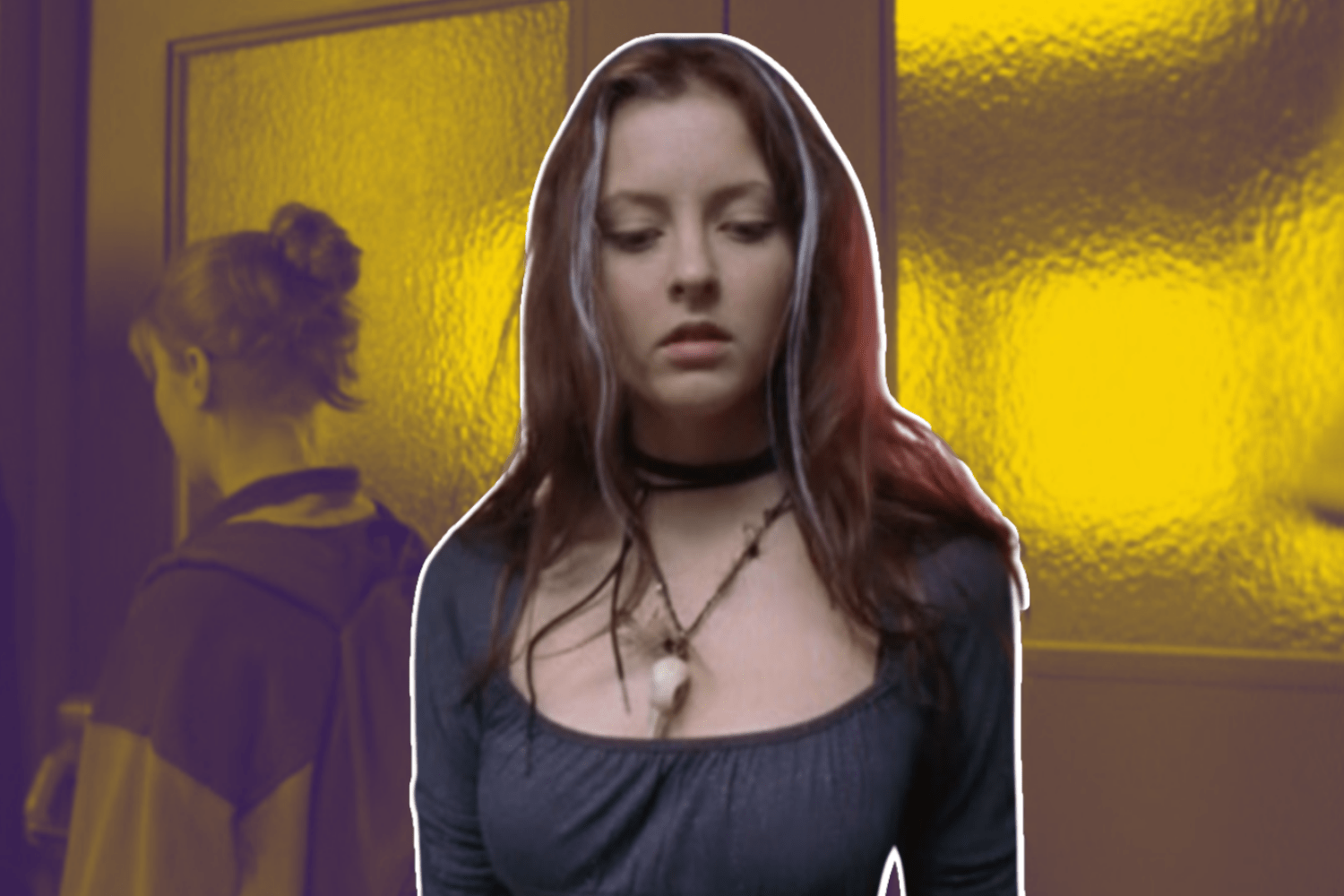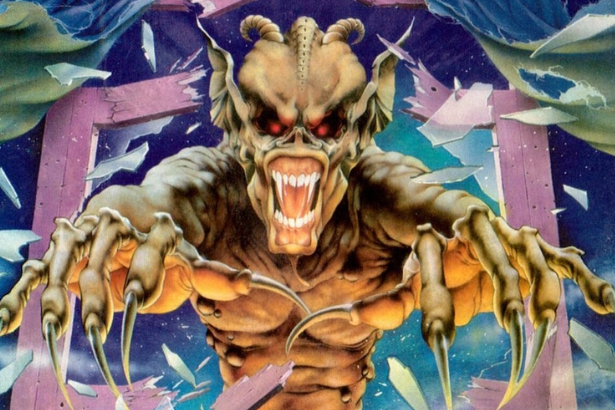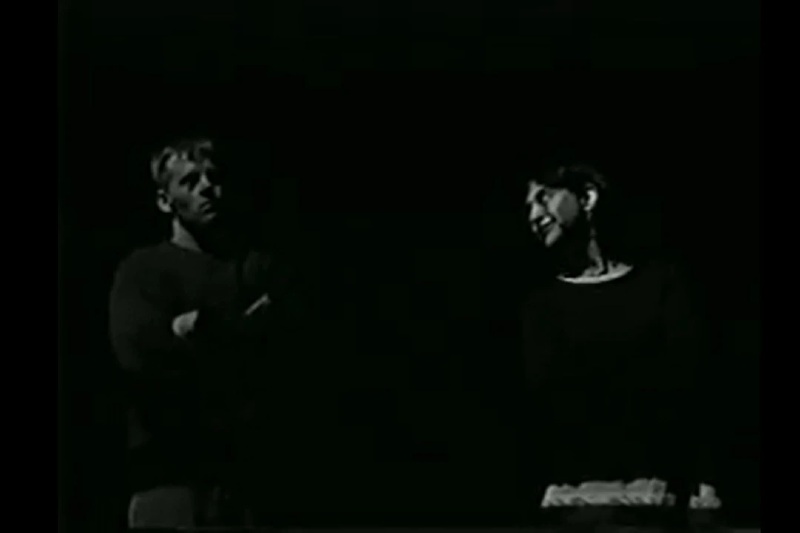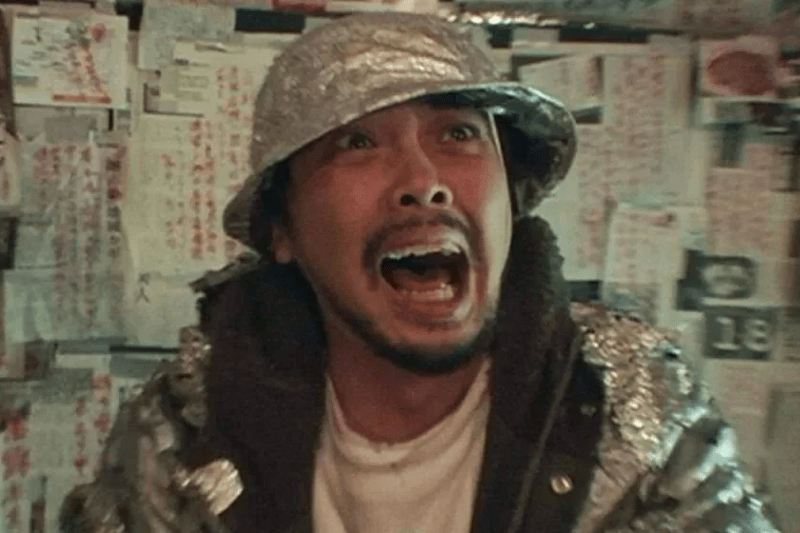EDITOR'S NOTE: This piece was originally published at Fangoria‘s website on April 17, 2020.
In a genre typically considered “for the guys,” it’s time to give a nod to the ladies. Uterus Horror is a subgenre of horror films that focuses on the uniquely female experience of puberty and the act of coming into your sexuality, using horror elements to emphasize and/or act as a metaphor for that experience. These films are often ignored in theaters but quickly develop cult followings. Columnist Molly Henery, who named and defined the subgenre, tackles a new film each month and analyzes how it fits into this bloody new corner of horror.
Last month we defined Uterus Horror and found its roots with Carrie. Now it’s time to dive into the film that brought about Uterus Horror’s modern resurgence, as well as being my favorite film of the subgenre, Ginger Snaps. This Canadian cult favorite had a small film festival run in 2000 before getting a wide release in Canada and a DVD release in the US in 2001. Directed by John Fawcett (Orphan Black, The Dark) and written by Karen Walton (Orphan Black, Queer as Folk), the film follows the Fitzgerald sisters as one of them goes through a life-altering transformation.
Ginger (Katharine Isabelle) and Brigitte (Emily Perkins), much like Carrie White, are outsiders. They are obsessed with death and the macabre, don’t dress or act like the other girls, and are generally considered dark stains on the otherwise cheery, suburban setting. Even biologically the pair are odd, as both sisters are a few years late getting their first period. Brigitte and Ginger unwisely venture out at night to exact a revenge prank on a school bully, despite knowing there is some kind of dangerous animal on the loose that has been killing the local dogs.
It’s during this excursion that Ginger gets her first period. Only moments later, a strange beast viciously attacks Ginger. The sisters manage to escape with their lives, but this is only the beginning. Brigitte watches as Ginger slowly changes. She is bleeding, hair is growing in places there never used to be hair, she’s more emotional and volatile, and she suddenly has an interest in boys the sisters used to hate. This may sound like normal puberty, but these are all also symptoms of Ginger’s new lycanthropic state.
When Ginger first gets her period, she calls it “the curse.” It draws a clear connection to folklore about werewolves and how lycanthropy is often called a curse. Yet that is the only time there is any notion of mysticism. What makes Ginger Snaps so compelling is not only the parallels between lycanthropy and female puberty, but also the scientific approach the filmmakers took. Puberty is a biological process and, in this film, so is lycanthropy. The fact that Ginger’s transformation is permanent also lends itself to a biological means rather than supernatural. In other werewolf lore, a man can change back and forth at will or changes with the moon. For Ginger, once she becomes the lycanthrope she stays that way. The cycle from the time Ginger is bitten to the time she becomes a lycanthrope takes about a month, just like a woman’s biological cycle.
Brigitte at one point describes her sister's change as being like an infection or virus as it changes her from the inside out, again not unlike puberty. This is likely a large part of why the early symptoms are so similar. The typical mythos of silver and full moons mean nothing here. It is research and science that lead Brigitte and the helpful local drug dealer, Sam (Kris Lemche), to find a potential cure for lycanthropy, monkshood.
The relationship between Brigitte and Ginger also adds to the adoration fans have for of this film. They constantly bicker and fight, yet would do anything for the other sister. Brigitte and Ginger also provide a fascinating juxtaposition for the audience. Ginger changes into a young woman both physically and mentally. Even without the lycanthropy, many of the changes she experiences would still happen with puberty. She suddenly cares how others view her and wants to be accepted, at least by the opposite sex. Brigitte, on the other hand, hasn’t experienced these changes yet. She and Ginger become opposing forces as Brigitte continues to maintain her individuality and keep a level head while trying to save her sister. Despite everything Ginger does throughout the film, all Brigitte wants is to help the sister she loves.
Of all the different metaphors for female puberty used in Uterus Horror, the transformation of werewolves is by far the most powerful. There is something gory, bloody, visceral, and animalistic about a young woman going through puberty and menstruating that perfectly connects to transforming into a werewolf. It’s a painful and messy process that many try to keep hidden. There have been several films since to use this metaphor in Uterus Horror, but Ginger Snaps seems to have originated and perfected the craft.
Much like Carrie, this Uterus Horror film did surprisingly well with film critics. Ginger Snaps currently sits at an 89% critics’ score on Rotten Tomatoes. When trying to gauge the financial success of the film, it’s a bit more difficult to decipher as the numbers differ depending on where you look. The general consensus seems to be that Ginger Snaps was not a huge financial success, grossing a small fraction in theaters of what it cost to be made. It wasn’t until the DVD release and eventual release on premium cable networks that the film truly gained momentum with horror fans. Now the film has a huge cult following of devoted fans that continually recommend the film to people, helping to grow the fan base. The film was eventually successful enough to bring about a sequel and a prequel. Both of the subsequent films star Ginger and Brigitte, although they don’t connect lycanthropy to female puberty the same way the first Ginger Snaps film did.
Since the release of Ginger Snaps, there has been a snowball effect of more Uterus Horror films. In those 20 years, fans have seen more and more films that focus on the uniquely female experiences of puberty and sexuality. Many of those films have come out just in just the past 5 years. Judging by the cult following Ginger Snaps has, it is only logical to surmise the film revived the subgenre that was started by Carrie. In the history of Uterus Horror, it is important to give credit to Walton and Fawcett for creating this iconic work of art that touched generations of weirdos who had never seen themselves properly represented in film before.
While writing about the importance of Ginger Snaps in the history and evolution of Uterus Horror, I felt the need to speak with Karen Walton. As the woman responsible for writing this pivotal film, which is also one of my favorite films of all time, it was important to ask her about Ginger Snaps, Uterus Horror, and the legacy she created. I reached out to her, and she was kind enough to answer my questions.
In this interview we discuss revitalizing Uterus Horror, creating fierce female characters, lycanthropy and puberty, the film’s cult following, and the future of Uterus Horror.
This interview has been edited for content and clarity.
Molly Henery: Carrie seems to be the beginning of Uterus Horror, but Ginger Snaps brought it back to the forefront of audiences' minds and started a rebirth of the subgenre. As the writer of such a legacy, did you have any inkling of how fiercely your film would be loved?
Karen Walton: That’s funny because my own company is actually called Inkling. I personally did not have a sense when writing the script that Ginger would have such a remarkable impact on people. I knew I wanted to write something really fresh and ideally original for the werewolf subgenre; that was really my focus then, that challenge. It was director John Fawcett, the film’s spark and our No. 1 contemporary horror fan on the team, who kept me convinced that it was in any way special, as I was writing. And our story editor, Ken Chubb, who helped me weave up the metaphor and really ‘go there’, layer the social/gender stuff in, emotionally.
But I can’t pretend I could foresee as a brand new screenwriter in the Nineties, that the story and characters would find so many friends out in the wider world. I knew the film would be good, because I was working with a great filmmaker and committed producers. But my uterus and I were just trying to write something my girlfriends and I would actually want to go see, something that felt true to being a young woman at that age — to us. The reactions to that simple goal have been a gift, and are sincerely appreciated here.
MH: What do you think it is about lycanthropy and female puberty that creates such a compelling parallel?
KW: To me, women’s experiences in particular are fertile ground for themes of The Body and The Bawdy. If we are healthy and our bodies are functioning as they should at that age, we are constantly contending with a physical transformation that alters how we feel, behave, and perceive the world we find ourselves in. And that world, in turn, is redressing its relationship with us: we are sexualized, monstricized, punished or praised depending on how we handle our nascent womanhood; biologically and psychologically.
The social pressures on young women — the vulnerabilities and dangers we all face, all over the world as we physically and emotionally mature simply due to the fact of our biological gender — are immense. We feel ugly, we feel powerful, we’re not children but we aren’t adults — our agency is limited by our parents, our teachers, our peers; we crave acceptance, we want to hide out in the bedroom and hope it all goes away, we seek to define who we are becoming: sometimes in unfortunate ways. We hunger for things, experiences, relationships, that are new to us. And not always good for us. We’re growing hair that wasn’t there before, we’re bleeding every 28 days and not supposed to talk about how painful and awkward that can be.
That’s a whole new horror to contend with for many, and the reactions that inspires in ourselves and others makes many of us want to rage against it all, lash out even before we can make sense of it. Adolescence is by biological and social design an ongoing transformation, and very personal as an experience. There’s no escaping it, I always felt as though it was something to survive, at 15. And so I imagine is becoming a werewolf. The one became both a mirror and a lens for the other, essentially.
MH: There are plenty of men that love Ginger Snaps, but this is a film that truly connects more with women, for obvious reasons. When you were writing the film, did you have any idea how it would resonate with female horror fans and give them characters they could better relate to beyond the 'final girl' archetype?
KW: That women connect with the film, as I say above, was a personal goal for me. When it was written, horror was by and large a man’s world in film, in my albeit limited experience. The male gaze was the frame, with few exceptions. But when I was very young, I had a teacher introduce us to Mary Shelley and Frankenstein, and I was very impressed with the story behind that story: a woman tackling subject matter that seemed reserved — and meant for — only men. The ‘final girl’ existed in my understanding as a viewer and reader only, but I probably hadn’t heard it expressed as we do today, then.
It was more a feeling that I wanted to watch young women I could respect and fathom, in terms of their priorities. I wanted to show that not all young women lived for boyfriends and peer approval, for instance — because I certainly didn’t, and no young women I knew did either. I wanted to show women being sisters, being faulty but meaningful friends, being each other’s support network in an unkind world. I wanted to see women I recognized — over the stock tropes. It turns out I was not alone, I guess - ha.
MH: Ginger and Brigitte are both very strong and dynamic, but realistically flawed characters, which is probably why so many people can relate to them. How did you go about creating these characters?
KW: Thank you. For all the aspiring screenwriters out there, I want to assure you it didn’t all come together in a fast, first draft. If the Fitzgerald sisters feel real, it’s because I took the time and had the team’s support to develop them properly as people, unique individuals, and had a story editor and a director who helped me raise the bar on both, each pass. I would say that Ginger took her final form first: the monsters always seem easiest, because we’re working with and against tropes. You sort of have a pre-cut set of expectations to eff around with, which is always fun. Brigitte was far more challenging, arguably because she was closer to my own character, at that age. It took me several passes to find her true voice, which was so easily eclipsed by Ginger’s more dominant personality at the top of the story.
So I did things like read a lot of books about female adolescent relationships and roles. I read a lot about sisters because I don’t have one, and how they get on at that age in particular. Reading Naomi Wolf’s Promiscuities gave me a wholly foreign but vital window on the adolescent experience of young women that way. And of course, Heavenly Creatures came out while I was writing Ginger Snaps, which was a major inspiration for me, in terms of how I looked at the way each of the girls felt and behaved in the world they were born into, how they might get through an average day if the werewolf had not come to Bailey Downs.
I thought a lot about their futures in a world we all recognize; what they would lose and gain if nothing ever happened to challenge their co-dependent stasis and self-imposed isolation. Then I went about nailing stakes into that coffin of a relationship, ‘being bitten’ became a catalyst/metaphor for the changes adolescence brings to us all: the plot or hard action became only about their unique and increasingly different choices, as they both became what was already built into that bound-to-break relationship.
MH: Why do you think there has been an increase in Uterus Horror films like Ginger Snaps over the past decade?
KW: So much has changed socially, globally, in such a contextually short time. Some of those changes include reimagining and challenging tropes, stereotypes, womens’ roles in classic genres. And of course, who writes and directs movies is now thankfully evolving to reflect a more diverse set of world views: particularly womens’. Our experiences have been under-represented, systemically, in what a scary movie can mean or be. Our views on the genre have historically been so far underestimated, for potency.
Original films and especially horror films tend to express the preoccupations of the society their makers live in, so as our cultures all contend with the wonderful mess we’ve all made of gender politics, it seems good and right and inevitable to me that we will enjoy even more wild, fresh takes on what is truly scary or awful or hair-raising for more kinds of human beings. I think that’s creative evolution at work: it’s the adaptation of a genre to the environment and audiences it now faces, and ideally speaks to. It’s wicked cool. I’m excited about what we’ll get to see next.
Visit our Editorials page for more articles like this. Ready to support more original horror criticism? Join the Certified Forgotten Patreon community today.







